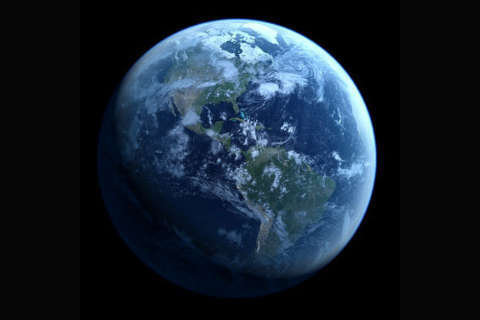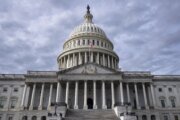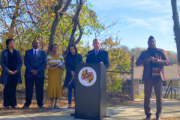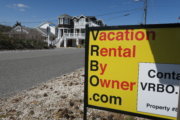BRASILIA, Brazil (AP) — In a visit to see the damage caused by drought and fire in the Amazon, President Luiz Inácio Lula da Silva pledged to pave a road that environmentalists and some in his own government say threatens to vastly increase destruction of the world’s largest tropical forest — and contribute to climate change.
The BR-319 roadway is a mostly dirt road through the rainforest that connects the states of Amazonas and Roraima to the rest of the country. It ends in Manaus, the Amazon’s largest city with over 2 million people, and runs parallel to the Madeira River, a major tributary of the Amazon River. The Madeira is at its lowest recorded level, disrupting cargo navigation, with most of its riverbed now endless sand dunes under a sky thick with smoke.
“We are aware that, while the river was navigable and full, the highway didn’t have the importance it has now, while the Madeira River was alive. We can’t leave two capitals isolated. But we will do it with the utmost responsibility,” Lula said Tuesday during a visit to an Indigenous community in Manaquiri, in Amazonas state. He didn’t specify what steps the government would take to try to prevent deforestation from increasing after paving.
Hours later, he oversaw the signing of a contract to pave 52 kilometers (32 miles) of the road, and promised to begin work before his term ends in 2026 on the most controversial section of the road — a 400-kilometer (249-mile) stretch through old-growth forest.
A permit for the longer stretch was issued under Lula’s far-right predecessor, Jair Bolsonaro, who favored development in the Amazon and weakened environmental protections. In July, a federal court suspended the permit in a lawsuit brought by the Climate Observatory, a network of 119 environmental, civil society and academic groups.
Lula’s government had appealed the suspension, but it wasn’t until his visit on Tuesday that Lula made clear his plan to move ahead with paving. The Climate Observatory lamented the move.
“Without the forest, there is no water, it’s interconnected,” said Suely Araújo, a public policy coordinator with the group. “The paving of the middle section of BR-319, without ensuring environmental governance and the presence of the government in the region, will lead to historic deforestation, as pointed out by many specialists and by Brazil’s federal environmental agency in the licensing process.”
Lula has sought to portray himself as an environmental protector, and deforestation has slowed significantly since he took over for Bolsonaro. But he has also struck out at times against pressure from richer nations on preserving the Amazon, an invaluable resource for the planet in storing the carbon driving atmospheric warming, and did so again on Tuesday.
“The world that buys our food is demanding that we preserve the Amazon,” he said. “And why? Because they want us to take care of the air they breathe. They didn’t preserve their own lands in the last century during the Industrial Revolution.”
Brazil is enduring its worst drought ever recorded, with 59% of the country under stress — an area about half the size of the U.S. In the Amazon, rivers’ low levels have stranded hundreds of riverine communities, with shortage of potable water and food. Lula announced a wide distribution of water filters and other measures during his visit to the region.
Meanwhile, most of Brazil has been under a thick layer of smoke from wildfires in the Amazon, affecting millions of people in faraway cities such as Sao Paulo, Brasilia and Curitiba and reaching as far south as Argentina and Paraguay. At Lula’s event, Environment Minister Marina Silva blamed the extreme drought brought by climate change for the widespread fires in a rainforest usually resistant to fire, calling it “a phenomenon we don’t even know how to handle.”
Silva has been more cautious than Lula about paving the roadway. At a congressional hearing earlier, she called the Bolsonaro era’s permit a “sham” and praised the judicial ruling that suspended it.
Brazil is the world’s fifth-largest emitter of greenhouse gases, contributing nearly 3% of global emissions, according to Climate Watch, an online platform managed by the World Resources Institute. Almost half these emissions stem from destruction of trees in the Amazon rainforest.
___
The Associated Press’ climate and environmental coverage receives financial support from multiple private foundations. AP is solely responsible for all content. Find AP’s standards for working with philanthropies, a list of supporters and funded coverage areas at AP.org.
Copyright © 2024 The Associated Press. All rights reserved. This material may not be published, broadcast, written or redistributed.






